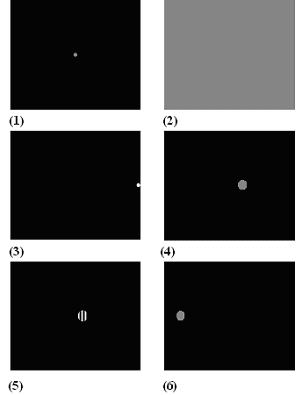
The oculomotor ability and the visual chacteristics to the rapidly moving picture

References:
EM.Saito, M.Yamada:Development of eye-movement analysis equipment for clarifying the visual characteristics of moving images,The First International Workshop on Image Media Quality and its Application, Nagoya(2005),pp.135-140@
EM.Saito, Y.Ogata, M.Yamada:Clarification of Eye Movement and Visibility
Characteristics in relation to the Reproduction of Higher Fidelity Moving
Images, The Second International Workshop on Image Media Quality and its
Applications,Chiba(2007)@
EY.Ogata, M.Saito, A.Sakamoto, M.Yamada: Percpetion of the Digitally Deteriorated
Image while Pursuing Speedily Moving Target, The Second International Workshop
on Image Media Quality and its Applications,Chiba(2007)
EK.Nawa, A. Seita, Y.Ogata, M.Yamada:Consideration of the accuracy of the
smooth pursuit eye movement among various type of displays, IMQA2008, Kyoto(2008)
EA.Seita, K.Nawa, Y.Ogata, M.Yamada: Perception of the Digitally detriorated
image and Eye Movement Characteristics While Pursuing a speedily moving
Target,IMQA2008, Kyoto(2008)
ES.Matsuzaki, T.Shimizu, M.Yamada: Subjective Evaluation of Moving Picture
when the Frame rate and Moving velocity are changed, IMQA2008, Kyoto(2008)
@We are researching how to reproduce high-definition and high-fidelity moving images. For this purpose, we have developed eye-movement analysis equipment, which can acquire eye movement data while a subject is viewing moving images. Using this equipment, we have analyzed the eye movement characteristics of various sports players, who are considered to have precise visual acuity for moving objects, while they were pursuing a moving target on the screen. From this experiment, we thought that we could select subjects who have superior eye-movement characteristics and whose results could thus clarify the conditions for improving moving images to have much higher definition and higher fidelity.
Experimental procedure


Figure1 Experimental Sequence
The presentation sequence of the moving target is shown in Figure 1 and
Figure 2.
1) To reduce the offset of the eye location, we let the subject gaze
at a small circle in the center of the display for a few seconds. ( (1)
in Fig.1 )
2) To allow the subject to relax and blink before the experiment,
a gray screen was displayed for a few seconds. ( (2) in Fig.1 )
3)A small circle, which indicated the starting point of a moving target,
was presented on either the left or right side of the display as well as
the beep sound; the subject was then instructed to gaze at the circle.
( (3) in Fig.1 )
4)After 1 second, a moving target was presented. ( (4) in Fig.1 )
5) An original target was replaced with the spatial frequency image
for a given short time with random timing while the target was moving.
( (5) in Fig.1 )
6)Again,
an original target moves toward its destination. ( (6) in Fig.1 )